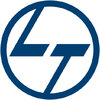
i
Essar Group
Filter interviews by
Essar Group Interview Questions, Process, and Tips
Essar Group Interview Experiences
28 interviews found
I applied via Campus Placement and was interviewed in Jul 2024. There were 2 interview rounds.
(10 Questions)
- Q1. Tell me about youself?
- Ans.
I am a recent graduate with a degree in engineering, eager to learn and grow in a professional setting.
Completed Bachelor's degree in Mechanical Engineering
Interned at XYZ Company, where I gained experience in project management
Proficient in CAD software such as SolidWorks
Strong problem-solving and analytical skills
Excellent communication and teamwork abilities
- Q2. What are your projects ?
- Ans.
I have worked on projects related to renewable energy systems and sustainable building design.
Designed and implemented a solar panel system for a residential building
Conducted energy audits to optimize energy efficiency in buildings
Researched and proposed sustainable materials for construction projects
- Q3. What you did in internship?
- Ans.
I worked on designing and implementing a new software system for tracking inventory and managing orders.
Developed a user-friendly interface for inputting and accessing data
Integrated barcode scanning technology for efficient inventory management
Collaborated with team members to troubleshoot and improve system functionality
- Q4. What are your favourite subjects ?
- Ans.
My favorite subjects are Mathematics, Physics, and Computer Science.
Mathematics - I enjoy solving complex problems and equations.
Physics - I am fascinated by the laws of nature and how things work in the universe.
Computer Science - I love coding and developing new software applications.
- Q5. What is 2nd law of thermodynamics?
- Ans.
The 2nd law of thermodynamics states that the total entropy of an isolated system can never decrease over time.
Entropy of a system tends to increase over time
Heat energy naturally flows from hot to cold objects
Efficiency of energy conversion processes is limited by the 2nd law
- Q6. What are the kelvin plank and claussis statement?
- Ans.
Kelvin-Planck and Clausius statements are two fundamental principles of thermodynamics.
Kelvin-Planck statement: It is impossible to construct a device that operates in a cycle and produces no effect other than the extraction of heat from a single reservoir and the performance of an equivalent amount of work.
Clausius statement: It is impossible to construct a device that operates in a cycle and produces no effect other ...
- Q7. What is difference between 4 stroke and 2 stroke engines?
- Ans.
4 stroke engines have separate intake, compression, power, and exhaust strokes, while 2 stroke engines combine intake and compression in one stroke and power and exhaust in another.
4 stroke engines have separate intake, compression, power, and exhaust strokes
2 stroke engines combine intake and compression in one stroke and power and exhaust in another
4 stroke engines are more fuel efficient and produce less pollution
2 ...
- Q8. What if we put diesel in SI engine and petrol in CI engine?
- Ans.
Putting diesel in SI engine and petrol in CI engine would lead to inefficient combustion and potential damage to the engines.
Diesel is designed to be used in compression ignition (CI) engines, which rely on high compression ratios to ignite the fuel. Using diesel in a spark ignition (SI) engine would result in incomplete combustion and poor performance.
Petrol is designed for use in spark ignition (SI) engines, which re...
- Q9. Differentiate b/w CI and SI engine?
- Ans.
CI engines use compression ignition while SI engines use spark ignition.
CI engines compress air to high pressures, causing the fuel to ignite spontaneously
SI engines use spark plugs to ignite the fuel-air mixture
CI engines are more fuel efficient but produce more emissions
Examples of CI engines include diesel engines, while SI engines include gasoline engines
- Q10. What is your final year project ? Asked in deep
(3 Questions)
- Q1. What do yo know about company??
- Ans.
Company is a leading engineering firm specializing in renewable energy solutions.
Company was founded in 2005 and has since grown to become a key player in the renewable energy sector.
They offer a wide range of services including solar panel installation, wind turbine maintenance, and energy efficiency consulting.
Company has completed projects in multiple countries, showcasing their global reach and expertise.
They prior...
- Q2. What is your strength and weakness ?
- Ans.
Strength: Strong problem-solving skills. Weakness: Difficulty delegating tasks.
Strength: Able to analyze complex problems and come up with effective solutions.
Weakness: Struggle to trust others to complete tasks to my standards.
Strength: Excellent attention to detail.
Weakness: Sometimes too focused on perfection, leading to delays in project completion.
Strength: Strong communication skills, able to effectively convey i...
- Q3. Are you happy to relocate?
- Ans.
Yes, I am happy to relocate for the right opportunity.
I am open to relocating for career growth and new experiences.
I have relocated in the past for internships and projects.
I understand the importance of being flexible and adaptable in the engineering field.
Interview Preparation Tips
- Thermodynamics
- IC Engines
- Strength of material
- Material Science
- Heat Exchangers
Graduate Engineer Trainee (Get) Interview Questions asked at other Companies
I applied via Campus Placement and was interviewed in Nov 2024. There were 3 interview rounds.
General English language and grammar, synonyms
I was asked about research advancement of my institute
(2 Questions)
- Q1. Tell us about yourself
- Ans.
Experienced professional with a background in retail management and a proven track record of driving sales and improving team performance.
Over 5 years of experience in retail management
Strong leadership skills with a focus on team development
Proven track record of exceeding sales targets
Excellent communication and problem-solving abilities
- Q2. Technical questions
Interview Preparation Tips
Assistant Manager Interview Questions asked at other Companies
I applied via Campus Placement and was interviewed in Jun 2024. There were 2 interview rounds.
4 sections assignment
(5 Questions)
- Q1. Tell about your shelf
- Q2. What is waste water treatment
- Ans.
Waste water treatment is the process of removing contaminants from wastewater to make it safe for discharge or reuse.
Waste water treatment involves physical, chemical, and biological processes to remove pollutants from water.
Common methods include sedimentation, filtration, disinfection, and biological treatment.
The goal is to produce treated water that meets environmental regulations and can be safely discharged into ...
- Q3. Some questions on my project and achievements
- Q4. Tell about company
- Q5. And about risk management
Interview Preparation Tips
Environmental Engineer Interview Questions asked at other Companies
I applied via Company Website and was interviewed in May 2024. There were 2 interview rounds.
Gear box replacement work
(6 Questions)
- Q1. Motor replacement work and safety first and all ppes sure and paper work and try out and walked away clean and fresh and bolts nut open and old motor remove and new motor replace and bolts nut tightening s...
- Q2. Barring checking and replacement work and safety first and all ppes sure and paper work and try out and walked away clean and fresh and blumber block top cover open and old slue Barring remove and new slue...
- Q3. Gear box replacement work and safety first and all ppes sure and paper work and try out and walked away clean and fresh and bolts nut open and old gear box remove and new gear box replace and bolts nut tig...
- Q4. V-scraper replacement work and safety first and all ppes sure and paper work and try out and walked away clean and fresh and bolts nut open and old v -scraper remove and new v-scraper replace and bolts nut...
- Q5. Barring greasing work and safety first and all ppes sure and paper work and walked away clean and fresh and Greasing gun and all pulley checking and savings Greasing work and sure and paper work cancelled
- Q6. Discharge Chute replacement work and safety first and all ppes sure and paper work and try out and walked away clean and fresh and bolts nut open and old discharge chute remove and new discharge chute repl...
Interview Preparation Tips
Deputy Manager Interview Questions asked at other Companies
Essar Group interview questions for popular designations
I was interviewed in Oct 2024.
(2 Questions)
- Q1. Why change of location
- Ans.
Seeking new opportunities and challenges in a different location.
Looking for a change of scenery and new experiences
Opportunity for personal and professional growth
Exploring different cultures and environments
Seeking better work-life balance or cost of living
Family reasons or personal preferences for a new location
- Q2. How do you manage contract management
- Ans.
I manage contract management by ensuring all contracts are reviewed, negotiated, and executed efficiently.
Developing and maintaining a contract management system
Reviewing contracts to ensure compliance with company policies and legal requirements
Negotiating contract terms and conditions with vendors or clients
Tracking contract milestones and deadlines
Communicating with stakeholders to ensure contract fulfillment
Resolvi...
Senior Counsellor Interview Questions asked at other Companies
Get interview-ready with Top Essar Group Interview Questions
I applied via Naukri.com and was interviewed in Dec 2023. There were 4 interview rounds.

(4 Questions)
- Q1. Civil engineering releted
- Q2. Qc,Bbs releted, site excursions
- Q3. Who many types of cement?
- Ans.
There are several types of cement used in construction.
Ordinary Portland Cement (OPC)
Portland Pozzolana Cement (PPC)
White Cement
Rapid Hardening Cement
Low Heat Cement
Sulfate Resistant Cement
Blast Furnace Slag Cement
High Alumina Cement
Oil Well Cement
- Q4. Who type of qurring ?
- Ans.
The question is unclear and does not make sense.
The question seems to be incomplete or misspelled.
It is difficult to understand what is being asked.
There is no context provided for the term 'qurring'.
Good experience and good coloured
Beam bbs calculation.
Skills evaluated in this interview
Civil Engineer Interview Questions asked at other Companies
I applied via Campus Placement
Simple aptitude questions and logical reasoning
(1 Question)
- Q1. Mechanical engineering
(3 Questions)
- Q1. General qualifications details
- Q2. Tell me about yourself
- Q3. Salary expectations
Deputy Manager Interview Questions asked at other Companies
I applied via Recruitment Consulltant and was interviewed in Apr 2024. There were 3 interview rounds.
ACCOUNTAN TALLY GST GSTR1 B2B B2C GSTR-3B
ACCOUNTANT GST AND ANY WAY
INDUSTRIAL SEAFTY MANAGEMENT
Interview Preparation Tips
Tally ERP 9 Accountant Interview Questions asked at other Companies
I applied via Naukri.com and was interviewed in Oct 2023. There were 2 interview rounds.
(2 Questions)
- Q1. On field Related Basics Questions and Scenario Based response answers checking of candidate
- Q2. Panel Members of Technical team are Good and Understands Your Answer. OR the message you are trying to convey.
(1 Question)
- Q1. Just Basic Round about family background and job role related t&c travel policies
I applied via Recruitment Consulltant and was interviewed in Sep 2023. There were 2 interview rounds.
(1 Question)
- Q1. Site engineer work mange the labour ,planning of project , supervisior of hole project
(1 Question)
- Q1. Planning and design each and every angle of site project
- Ans.
Planning and designing every aspect of a site project is crucial for its success.
Understanding the project requirements and constraints
Creating detailed plans and drawings
Considering factors such as site topography, drainage, utilities, and environmental impact
Ensuring compliance with local regulations and codes
Collaborating with architects, contractors, and other stakeholders
Regularly reviewing and updating the design
Civil Site Engineer Interview Questions asked at other Companies
I applied via Recruitment Consulltant and was interviewed in Jan 2023. There were 2 interview rounds.
(1 Question)
- Q1. Please call me regarding my interview
(3 Questions)
- Q1. How many experience i have?
- Q2. How many denials are you worked?
- Ans.
I have worked on numerous denials throughout my career, gaining valuable experience in resolving them.
I have successfully resolved denials related to insurance claims, ensuring timely reimbursement for the organization.
I have worked on denials related to medical coding errors, identifying and rectifying the issues to prevent future denials.
I have experience in appealing denials based on medical necessity, providing str...
- Q3. Location of my previous company?
Interview Preparation Tips
Senior Executive Interview Questions asked at other Companies
Top trending discussions






Essar Group Interview FAQs
The duration of Essar Group interview process can vary, but typically it takes about less than 2 weeks to complete.
Recently Viewed
Tell us how to improve this page.
Essar Group Interviews By Designations
- Essar Group Deputy Manager Interview Questions
- Essar Group Electrical Engineer Interview Questions
- Essar Group Assistant Manager Interview Questions
- Essar Group Civil Engineer Interview Questions
- Essar Group Team Manager Interview Questions
- Essar Group HR Manager Interview Questions
- Essar Group Mechanical Engineer Interview Questions
- Essar Group Civil Site Engineer Interview Questions
- Show more
Interview Questions for Popular Designations
Essar Group Interview Process
based on 25 interviews
Interview experience
Interview Questions from Similar Companies
Fast track your campus placements
Essar Group Reviews and Ratings
based on 371 reviews
Rating in categories
|
Assistant Manager
78
salaries
| ₹0 L/yr - ₹0 L/yr |
|
Manager
73
salaries
| ₹0 L/yr - ₹0 L/yr |
|
Deputy Manager
64
salaries
| ₹0 L/yr - ₹0 L/yr |
|
Senior Manager
42
salaries
| ₹0 L/yr - ₹0 L/yr |
|
Deputy General Manager
19
salaries
| ₹0 L/yr - ₹0 L/yr |

Tata Group

Reliance Industries

Adani Group

Bharti Enterprises
- Home >
- Interviews >
- Essar Group Interview Questions


















